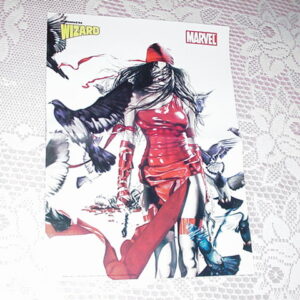Description
You are purchasing the item pictured, framed. Priority mail, tracking and $50 insurance is included with purchase. Item will be bagged to protect from dust, packed in packing peanuts and boxed. Just open box and hang it on the wall…makes a perfect gift!
America may have been changing rapidly in the 1960s, but you’d never know it from reading romance comics- most of which stayed focused on simple tales of love found, lost and then regained. Oftentimes the female protagonist would be debased in some manner along the way, forced to hide or defer her true feelings because, as longtime DC romance editor Joe Orlando once pointed out, “the number one thing was that the male was always the answer to a girl’s happiness.” In this issues cover story, “Never Tell a Man You Love Him,” the presence of some modish mid-’60s hairdos- one of the male characters sports a Beatle cut- is the only clue that this tale takes place in the present-day and not in the 1890s, as a single “girl” finds herself rejected time and time again by men who are freaked out by her overeager declaration of devotion. In the end, of course, she finds true love with a man who isn’t frightened off so easily. “I remember having a somewhat vulgar conversation, I can’t remember with whom, but it was about editorial. The gist was that this was the ’60s and what the hell can be written about romance? You think these girls believe that bells ring when true love happens?”- Joe Orlando. Girls’ Love Stories was a romance comic book published by DC Comics in the United States. Started in 1949 as DC’s first romance title, it ran for 180 issues, ending with the Nov-Dec 1973 issue. The stories covered such topics as girls worrying about getting a man, or marrying out of pressure, not love. Some of the early covers were photographs. The book’s initial tagline was “True to Life!” Writers for the title included Bob Kanigher and George Kashdan. Notable artists for Girls’ Love Stories included Tony Abruzzo, Vince Colletta, Bill Draut, Frank Giacoia, Gil Kane, Bob Oksner, Art Peddy, Jay Scott Pike, John Romita, Sr., Joe Rosen, John Rosenberger, Bernard Sachs, and Mike Sekowsky. Roy Fox Lichtenstein was an American pop artist. During the 1960s, along with Andy Warhol, Jasper Johns, and James Rosenquist among others, he became a leading figure in the new art movement. Favoring the comic strip as his main inspiration, Lichtenstein produced hard-edged, precise compositions that documented while it parodied often in a tongue-in-cheek humorous manner. His work was heavily influenced by both popular advertising and the comic book style. Most of Lichtenstein’s best-known works are relatively close, but not exact, copies of comic book panels, a subject he largely abandoned in 1965, though he would occasionally incorporate comics into his work in different ways in later decades. These panels were originally drawn by such comics artists as Jack Kirby and DC Comics artists Russ Heath, Tony Abruzzo, Irv Novick, and Jerry Grandenetti, who rarely received any credit. One of Lichtenstein’s copies of Abruzzo’s work recently sold for $45,000,000 at auction. A work by Roy Lichtenstein has sold at auction for nearly $45m, a new record for the US Pop Art icon. Sleeping Girl, from 1964, went for $44.9m (£27.8m) at Sotheby’s New York sale of post-war and contemporary art.
>PAN>Frame is shrinkwrapped until time of purchase. Ships boxed with packing peanuts.
THE PERFECT GIFT!
Related products
-


Daredevil vs Elektra Poster Ultimate Salvador Larroca
$29.99 Add to cart -


Elektra Poster # 2 by Rodolfo Migliari Daredevil Thunderbolts
$29.99 Add to cart -


Captain America Poster # 9 In Chains by John Cassaday Issue 8
$29.99 Add to cart -


Soulfire Poster # 1 Grace by Michael Turner Fathom
$39.99 Add to cart




